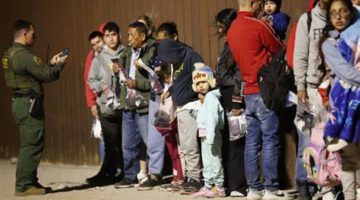Miami, Fla.—-The City of Miami’s plan to move 200 chronic homeless people in 100 tiny homes on historic Virginia Key Beach Park to isolate them from drugs and violence on the city’s streets in hopes of putting their lives back together has drawn strong opposition from the Virginia Key Beach Park Trust. The Trust is responsible for the beach park originally named ‘Colored Only Beach’ created on August1, 1945.
Residents of Key Biscayne and Virginia Key revitalization advocates also joined in the opposition suggesting it’s not the right destination for a pilot project because it’s not part of the master plan for the beach park, which is also a tourist attraction.
City commissioners’ decision on July 28 during their regular meeting was a blow to generations of Blacks who spearheaded efforts and risked being arrested during demonstrations to preserve Miami’s only "Colored Beach" which recently celebrated its 77th birthday.
In 1945, Virginia Key Beach Park, then called Baker’s Haulover, was being developed by Dade County for "Whites Only" during segregation, but a group of courageous African Americans engaged in a bold act of civil disobedience, fully a decade before such tactics became the emblem of the Civil Rights movement by wading in the water with the risk of being arrested.
They brought public attention to their demand for a bathing beach for the Colored population.
Guy Forchion, the executive director of the Virginia Key Beach Park Trust, told NBC 6 after city commissioners designated the historic site as their top choice for the pilot program, that to some in the Black community, it feels like something else being dumped on the island that was the colored only beach.
He said the plan isn’t good for the safety of residents who enjoy hanging out at the beach park or the homeless.
“You are talking about a population that needs a lot of services. We are roughly two miles from Rickenbacker Causeway, which is where public transportation does touch,” said Forchion.
Forchion said a petition is circulating around the City of Miami to stymie the homeless camp at Virginia Key.
Patrick Range, chair of Virginia Key Beach Park Trust, said Virginia Key Beach Park Trust Board of Trustee is opposed to the recent City of Miami Commission’s approval of Virginia Key as the location for a future homeless population encampment.
He said the Trust was not contracted in advance or consulted regarding the City’s Transportation and Transition Zone report.
"It’s very disappointing the City of Miami Commission would move a discussion item of this magnitude and importance into an action item without consulting the trust and other stakeholders," he said.
Range said for two decades the Virginia Key Beach Park Trust has worked to transform the 82-ace Historic Beach Park from abandoned beach, full of history to paradise renewed on Virginia Key.
The park reopened in 2008 and the community and Virginia Key stakeholders developed a master plan for the island.
"I’m sure the communities that neighbor Virginia Key and the thousands of families and tourists who visit the island daily would believe there are more appropriate locations in the City of Miami to provide transitional services for Miami’s homeless population," he said.
Gene Tinnie, a member of the trust, a well known visual artist, writer and semiretired educator wrote a column in the South Florida Times in 2015 that commemorated the 70th birthday of the colored only beach and the hardship Blacks endured looking for a beach to swim and relax during segregation .
Tinne said the colored population was totally excluded by law despite playing a vital role in building and sustaining the overall community.
After protests and Blacks daring the police to arrest them, the county finally gave in and opened a bathing beach for Colored use on Virginia Key.
"That prompt and positive response from the county’s powers-that-be, and their subsequent decision to make Virginia Key Beach very nearly (but never quite) equal to Crandon Park on Key Biscayne, was a reflection of the mutual respect that existed between them and the leadership of Miami’s thriving and successful Black community, in stark contrast to other parts of the South," Tinne said in his column. "The tangible result was a beach which regularly attracted large numbers of residents and visitors alike, including famed celebrities, and became the hub of Black life in South Florida."
Key Biscayne residents and the Virginia Key Beach Park Trust applauded city commissioners when they initially rejected the proposal to move the homeless to Virginia Key, but it was short-lived when Commissioner Alex Diaz de la Portilla, who voted against the idea during the first vote, brought it back and endorsed it along with Commission Chairwoman Christine King and Vice Chair Joe Carollo.
Virginia Key was the top choice among three sites for the program to help resolve the city’s long-running homeless crisis.
Despite tight security and a ban on drugs and alcohol and other restrictions to protect people visiting Virginia Key, Portilla initially rejected the site along with Commissioners Ken Russell and Manalo Reyes citing the impact on economic development opportunities. They also said the move is risky to place homeless people in close proximity with other people using the same walking and bike baths, beaches and showers.
Later in the commission meeting, commissioners supported Portilla’s recommendation for city staff to bring back another proposal in September with additional sites that would still include Virginia Key as the top pick for the pilot program which is voluntary.
Portilla said other locations should include areas currently under redevelopment in Miami and land owned by Miami-Dade County, and he requested the Miami Homeless Trust should help fund the pilot program.
"I’m bringing back the proposal with the caveat that they come back in September with other sites,"he said. "I’d objected to it earlier because of the limited sites and the lack of due diligence. Look at other sites that are in the process of redevelopment."
The northern point of Virginia Key offers the larger site, 125,000 square feet compared to the other two locations and is the furthest, about 2.4 miles, from residential communities in Key Biscayne.
Virginia Key is big enough to build 100 encampments to accommodate up to 200 homeless people and trailers for mental health and other social services and job training.
The other proposed sites were in Liberty City, on a state-owned lot under Interstate 95, at the corner of Northwest 71st Street and Fifth Place which is already leased to the city, and a privately-owned parcel in Allapattah.
The city has been struggling to resolve the homeless crisis for years: getting homeless people into shelters where they can get cleaned up and learn trade skills to get them back on their feet has been a difficult task.
Instead, scores of homeless people are sleeping in tents and makeshift domiciles in Downtown Miami, Overtown, Liberty City, Little Havana and public parks, causing eyesores and drawing nuisance complaints from residents.
The areas are densely populated and the city zeroed in the three locations to move homeless people away from residential areas where they can have access to social services.
The city endorsed an ordinance this year that gives the local police the power to arrest homeless people if they are sleeping in the streets and refuse to enter homeless shelters.
Carollo, who is spreading the initiative, said homeless people refuse to go to shelters because they can’t buy or use drugs and alcohol.
He said placing them on the island at Virginia Key would isolate them from drug dealers in the city’s streets, and give them new hope to get clean and sober and get work.
"It’s not the Ritz Carlton but it’s better than being out on the streets,” Carollo said. "Bring trailers in there to have for mental health, bring others to deal with drug addictions and job training for those who want help. If we don’t do anything about it now, we are not fulfilling our obligation."
Carollo said other major U.S. cities have similar homeless encampments or tiny homes programs and they were successful including New York, Los Angeles, Olympia, Washington and Detroit.
Carollo said the City of Miami can repeat the same success but some city leaders and residents near Virginia Key don’t want to give the program a chance.
"It’s clear no one wants this in their neighborhood," Carollo said. "Some want to see more studies but we have been working on site proposals for a long time to see what they can find. The area makes more sense to me to help clean up some of our neighborhoods but all kinds of excuses are being thrown around all of sudden."
Commission Chairwoman Christine King, who served on the board for Camillus House, said she witnessed homelessness first hand as president of the MLK Economic Development Corporation in Liberty City.
Her district office is also located in the building.
She said individuals sleep under the facade of the facility and she reached out to a homeless woman who refused to take up shelter at Camillus House.
"I know a woman who lives on N.W. 61 Street and 7th Avenue and she will not leave that corner," King said. "She doesn’t have a washing facility. This approach is a wonderful solution for her. Is it perfect? No. But it’s an option."
King responded to Key Biscayne residents and Virginia Key advocates who said homelessness is not in the master plan for revitalization of the site and nearby Miami Marine Stadium.
"Homelessness is not in anyone’s master plan," she said. "It’s offensive to say homelessness is not in any one’s master plan."
Russell said the city shouldn’t tackle an issue of this magnitude on its own because of the costs and eliminated Virginia Key as a proposed site.
City staff members indicated start-up costs are estimated between $800,000 to $1 million and another $1 million to run it annually.










No Comment